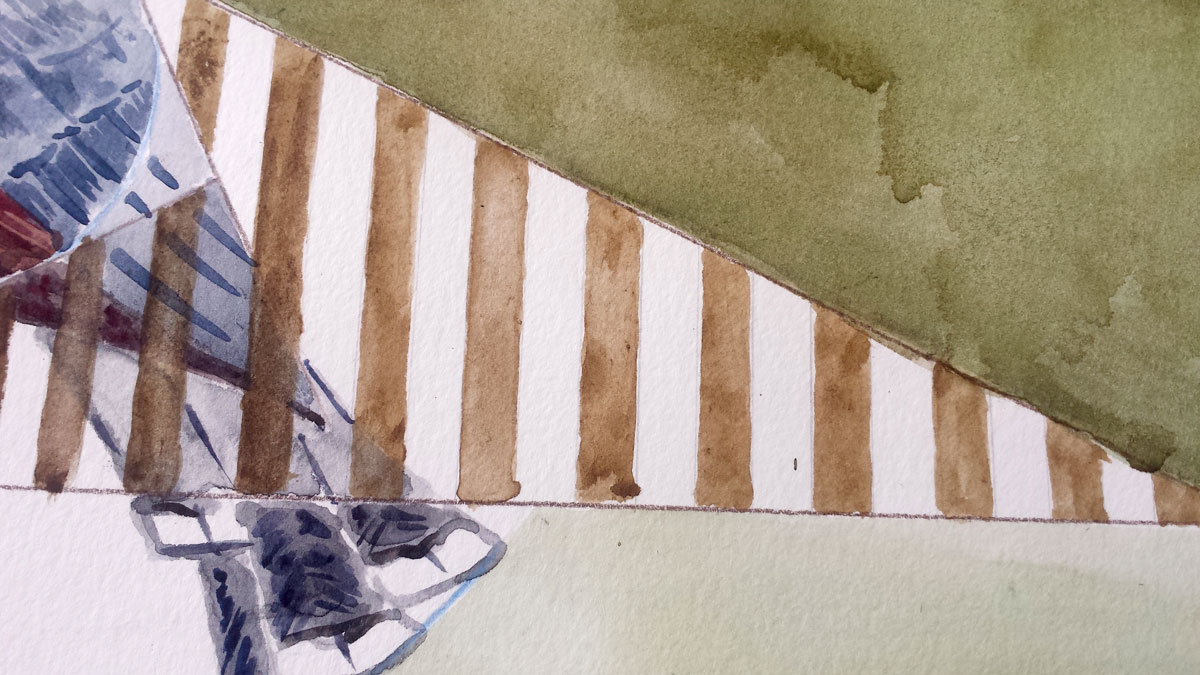This geometric abstraction of the Dominican Cúa corresponds to the series of drawings and paintings on endemic birds that I have been interested in capturing, either on paper or on canvas. The Cúa is a very striking bird because of its colors and because it is very difficult to find in the forests. It stands out for its long and curved beak and for having its front part all red, which distinguishes it from the Bobo Bird, which is a very similar bird.
Freehand figurations

To begin with this geometric abstraction, I have taken different views and varied positions of the original figurative form of the Cúa. Without paying attention to details, only general lines that could determine the contour and its volume. These are the guides that serve to abstract the form later. I used a 4B graphite pencil for the contour and the shading of the figures.
First abstractions

I have opted for geometric shapes with which to decompose the figure. The quadrilaterals, circles and triangles appear as directive geometric figures of the composition. In order not to completely abstract the figuration, I include the beak, the wings and the tail in a harmonious whole with the geometric shapes already described. I start with an initial sketch to compose the figures. The use of the straight and curved line gives dynamism to the whole, even more so as serving as tangential and secant lines that allow separating or cutting a figure to cause an offset by segment of the planes, as can be seen in the second drawing.
Definitive abstraction

The definitive geometric abstraction shows its dynamism with the segments of planes and figurative forms in complete harmony. By including a secant line crossing the rectangle, it causes it to divide causing a displacement that at the same time circumscribe the circles that make their appearance between the different elements. The triangular shape in horizontal position with vertical lines that mark a rhythm inside compensate for the diagonal break that is a tendency in the composition.
Technical drawing with graphite pencil

To start working on watercolor, I have drawn the composition achieved in the previous drawing with a 2H graphite pencil. The hardness of the pencil allows me a clear line of poorly visible lines.

The guidelines of the composition are accentuated with colored pencils. This gives priority to the contour of the shapes when applying color spots. I have used a sepia for the primary forms and thus give the feeling of being in the foreground, compared to those of blue that pretend to be behind.
First color spots

I began to stain the background with a forest green in a fairly light colored layer. In this way the positive space is already separated from the negative one, highlighting the figure that has been composed.

With shades of blue-violet, carmine red and black I have stained the body that represents the Cúa bird. The Background is reinforced with a second layer of forest green.
Definitive work

Finally, the parts of the bird’s body are detailed, distinguishing its carmine-red areas from the throat to the feathers; equally his head with the curved beak and that peculiar shadow that surrounds the eyelids. In addition, the vertical lines that accompany the triangular shape in the composition are colored, with an ocher tone that harmonizes well with the background.



